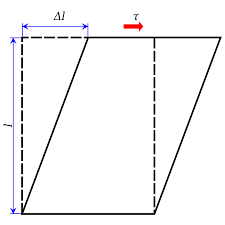shear
英 [ʃɪər]
美 [ʃɪr]
- vt. 剪;修剪;剥夺
- vi. 剪;剪切;修剪
- n. [力] 切变;修剪;大剪刀
- n. (Shear)人名;(英)希尔
使用频率:

记忆方法
1. PIE *sker- "cut" => shear, scar.
2. sheer, shear: 有耳朵的(ear)是剪. shears 大剪刀.
3. 有耳朵(ear)当然是动物,所以是剪动物身上的毛。
4. 谐音“撕耳朵”------剪耳朵。
5. short shear. cut short.
6. 谐音“削儿”----削剪。
2. sheer, shear: 有耳朵的(ear)是剪. shears 大剪刀.
3. 有耳朵(ear)当然是动物,所以是剪动物身上的毛。
4. 谐音“撕耳朵”------剪耳朵。
5. short shear. cut short.
6. 谐音“削儿”----削剪。
中文词源
shear 剪刀,剪,剪切,剪羊毛
来自古英语 sceran,剪下,切下,来自 Proto-Germanic*sker,剪,切,来自 PIE*sker,剪,切, 词源同 share,sharp.引申诸相关词义。
英语词源
- shear
-
shear: [OE] Shear is the principal English descendant of the Indo-European base *sker- ‘cut’, which has also produced English score, share, shirt, short, and skirt, and probably sharp and shore as well. A variant of the base without the s is responsible for curt and curtail. The immediate source of shear itself is prehistoric Germanic *skeran, which also evolved into German and Dutch scheren, Swedish skära, and Danish skjære.
The verb sheer ‘swerve’ [17] probably originated as a variant of shear, but the adjective sheer [16] is an entirely different word. It probably represents a survival of Old English scīr ‘bright, shining’, which came ultimately from the Germanic base *ski-, source also of English shimmer and shine.
=> curt, curtail, score, share, sheer, shirt, short, skirt - shear (v.)
- Old English sceran, scieran (class IV strong verb; past tense scear, past participle scoren) "to cleave, hew, cut with a sharp instrument; cut (hair); shear (sheep)," from Proto-Germanic *sker- "to cut" (cognates: Old Norse and Old Frisian skera, Dutch scheren, German scheren "to shear"), from PIE *(s)ker- (1) "to cut, to scrape, to hack" (cognates: Sanskrit krnati "hurts, wounds, kills," krntati "cuts;" Hittite karsh- "to cut off;" Greek keirein "to cut, shear;" Latin curtus "short;" Lithuanian skiriu "to separate;" Old Irish scaraim "I separate;" Welsh ysgar "to separate," ysgyr "fragment").
- shear (n.)
- "act of clipping," 1610s, also as a unit of measure of the age of a sheep, from shear (v.). Scientific and mechanical sense "type of strain" is from 1850.
权威例句
- 1. They discovered that they could shear sheep, take the wool, weave it and fashion the material into warm coats and suits,.
- 他们发现他们能够剪羊毛 、 纺绒线、织成毛料, 然后把毛料做成暖和的衣服.
- 2. In the Hebrides they shear their sheep later than anywhere else.
- 在赫伯里兹,剪羊毛的时间比其他任何地方都要晚。
- 3. Normally the shear velocity is about half of the compressional velocity.
- 一般地说横波速度大约是纵波速度的一半.
- 4. The interfacial shear stress is a constant proportion of the bottom shear.
- 交界面的剪力与底部剪力之比是常数.
- 5. Without loss of generality, shear deformations will be neglected.
- 不失一般性, 忽略不计剪切变形.
